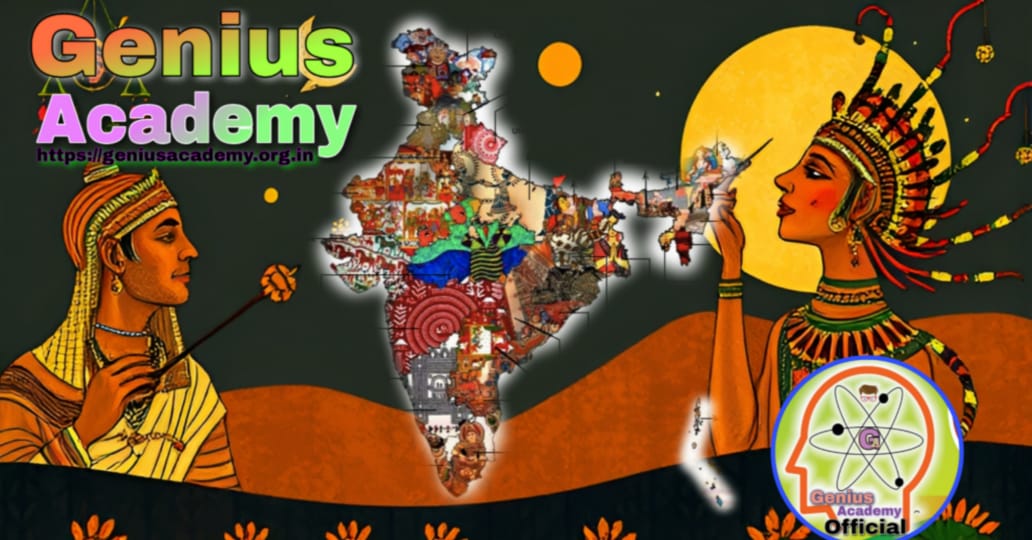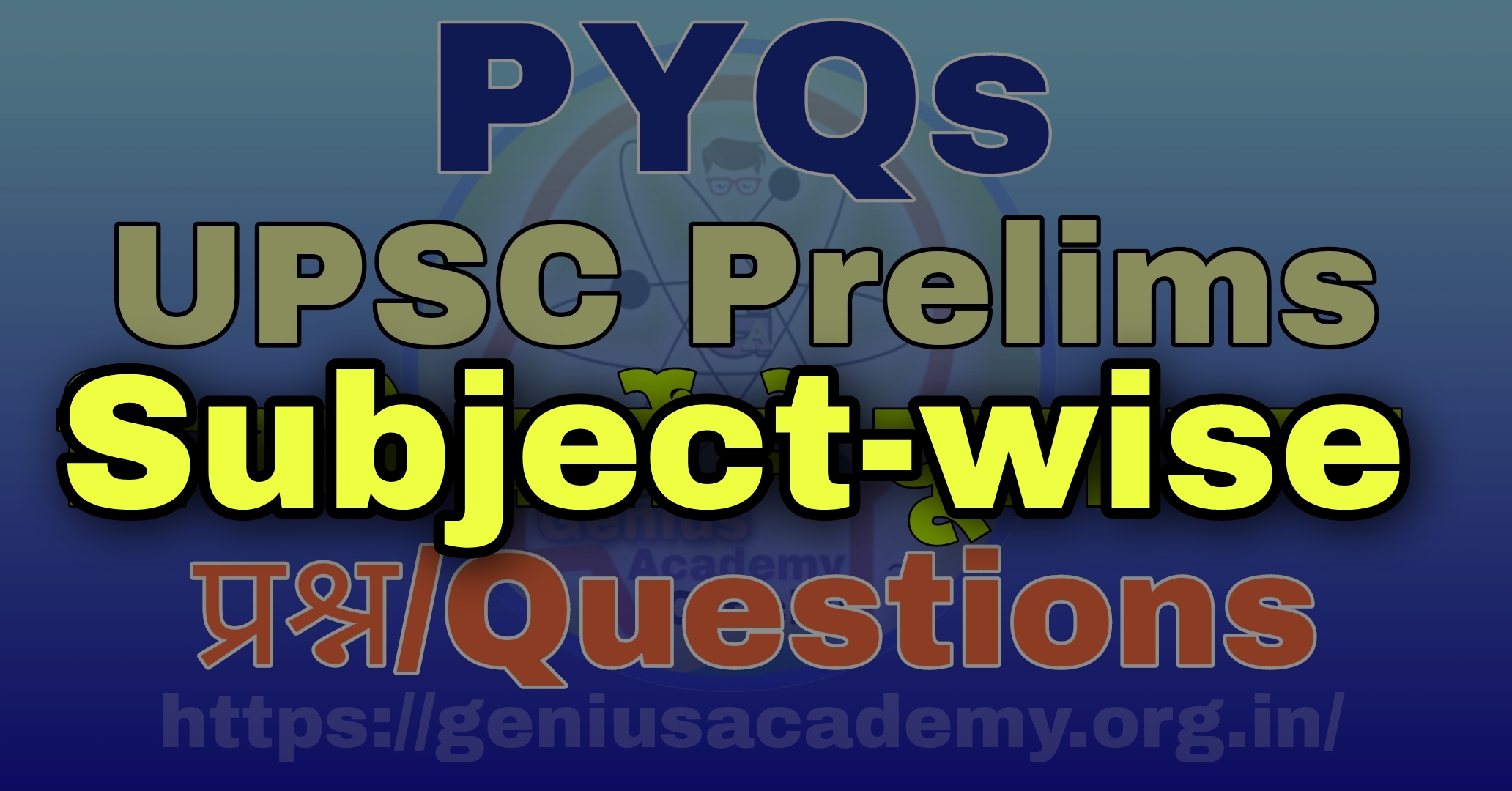UPSC Prelims PYQs Subject-wise
Ancient History (UPSC Prelims) [2013-2024] – Previous Year Questions
| Arts & Culture – UPSC CSE Preliminary (PYQs) |

2024
1. Which one of the following was the latest inclusion in the Intangible Cultural Heritage List of UNESCO?
(a) Chhau dance
(b) Durga puja
(c) Garba dance
(d) Kumbh mela
Correct Answer!
Incorrect Answer!
Garba dance was inscribed on UNESCO’s Representative List of the Intangible Cultural Heritage of Humanity in 2023, making it the latest addition from India. Chhau dance was inscribed in 2010, Durga Puja in 2021, and Kumbh Mela in 2017.
What is Intangible Cultural Heritage (ICH)?
Intangible Cultural Heritage refers to the practices, representations, expressions, knowledge, and skills that communities, groups, and individuals recognize as part of their cultural heritage. It goes beyond physical monuments and artifacts, encompassing living traditions and cultural expressions that are passed down from generation to generation.
ICH also includes instruments, objects, artifacts, and cultural spaces associated with these traditions, ensuring that cultural heritage is dynamic, living, and community-centered.
Domains of Intangible Cultural Heritage (as per UNESCO’s 2003 Convention):
1. Oral Traditions and Expressions, including language as a vehicle of cultural heritage
2. Performing Arts
3. Social Practices, Rituals, and Festive Events
4. Knowledge and Practices Concerning Nature and the Universe
5. Traditional Craftsmanship
India’s Intangible Cultural Heritage Recognized by UNESCO:
India currently has 15 elements inscribed on UNESCO’s Representative List of the Intangible Cultural Heritage of Humanity, following the addition of Garba of Gujarat in 2023.| S.No. | Intangible Cultural Heritage Element | Year of Inscription |
|---|---|---|
| 1 | Kutiyattam, Sanskrit Theater | 2008 |
| 2 | Tradition of Vedic Chanting | 2008 |
| 3 | Ramlila – The Traditional Performance of the Ramayana | 2008 |
| 4 | Ramman Festival (Garhwal Himalayas) | 2009 |
| 5 | Chhau Dance | 2010 |
| 6 | Kalbelia Folk Songs and Dances of Rajasthan | 2010 |
| 7 | Mudiyettu – Ritual Theatre and Dance Drama of Kerala | 2010 |
| 8 | Buddhist Chanting of Ladakh | 2012 |
| 9 | Sankirtana – Ritual Singing, Drumming and Dancing of Manipur | 2013 |
| 10 | Traditional Brass and Copper Craft (Thatheras of Jandiala Guru) | 2014 |
| 11 | Nowruz | 2016 |
| 12 | Yoga | 2016 |
| 13 | Kumbh Mela | 2017 |
| 14 | Durga Puja in Kolkata | 2021 |
| 15 | Garba of Gujarat | 2023 |
2. Consider the following properties included in the World Heritage List released by UNESCO:
1. Shantiniketan
2. Rani-ki-Vav
3. Sacred Ensembles of the Hoysalas
4. Mahabodhi Temple Complex at Bodhgaya
How many of the above properties were included in 2023?
(a) Only one
(b) Only two
(c) Only three
(d) All four
Correct Answer!
Incorrect Answer!
The correct answer is (b) Only two
Shantiniketan: Added to the UNESCO World Heritage List in 2023 for its cultural and educational significance, founded by Rabindranath Tagore in West Bengal, India.
Cultural World Heritage Sites (35)
| Site Name | State | Year |
|---|---|---|
| Ajanta Caves | Maharashtra | 1983 |
| Ellora Caves | Maharashtra | 1983 |
| Agra Fort | Uttar Pradesh | 1983 |
| Taj Mahal | Uttar Pradesh | 1983 |
| Sun Temple, Konârak | Odisha | 1984 |
| Group of Monuments at Mahabalipuram | Tamil Nadu | 1984 |
| Churches and Convents of Goa | Goa | 1986 |
| Khajuraho Group of Monuments | Madhya Pradesh | 1986 |
| Group of Monuments at Hampi | Karnataka | 1986 |
| Fatehpur Sikri | Uttar Pradesh | 1986 |
| Group of Monuments at Pattadakal | Karnataka | 1987 |
| Elephanta Caves | Maharashtra | 1987 |
| Great Living Chola Temples | Tamil Nadu | 1987 |
| Buddhist Monuments at Sanchi | Madhya Pradesh | 1989 |
| Humayun’s Tomb | Delhi | 1993 |
| Qutb Minar and its Monuments | Delhi | 1993 |
| Mountain Railways of India | Multiple | 1999 |
| Mahabodhi Temple Complex | Bihar | 2002 |
| Rock Shelters of Bhimbetka | Madhya Pradesh | 2003 |
| Chhatrapati Shivaji Terminus | Maharashtra | 2004 |
| Champaner-Pavagadh Archaeological Park | Gujarat | 2004 |
| Red Fort Complex | Delhi | 2007 |
| The Jantar Mantar | Rajasthan | 2010 |
| Hill Forts of Rajasthan | Rajasthan | 2013 |
| Rani-ki-Vav | Gujarat | 2014 |
| Nalanda Mahavihara | Bihar | 2016 |
| Work of Le Corbusier | Chandigarh | 2016 |
| Historic City of Ahmedabad | Gujarat | 2017 |
| Gothic and Art Deco Ensembles | Mumbai | 2018 |
| Jaipur City | Rajasthan | 2019 |
| Kakatiya Rudreshwara Temple | Telangana | 2021 |
| Dholavira | Gujarat | 2021 |
| Santiniketan | West Bengal | 2023 |
| Sacred Ensembles of Hoysalas | Karnataka | 2023 |
| Moidams of Ahom Dynasty | Assam | 2024 |
Natural World Heritage Sites (7)
| Site Name | State | Year |
|---|---|---|
| Kaziranga National Park | Assam | 1985 |
| Manas Wildlife Sanctuary | Assam | 1985 |
| Keoladeo National Park | Rajasthan | 1985 |
| Sundarbans National Park | West Bengal | 1987 |
| Nanda Devi and Valley of Flowers | Uttarakhand | 1988 |
| Western Ghats | Multiple | 2012 |
| Great Himalayan National Park | Himachal Pradesh | 2014 |
Mixed World Heritage Site (1)
| Site Name | State | Year |
|---|---|---|
| Khangchendzonga National Park | Sikkim | 2016 |

